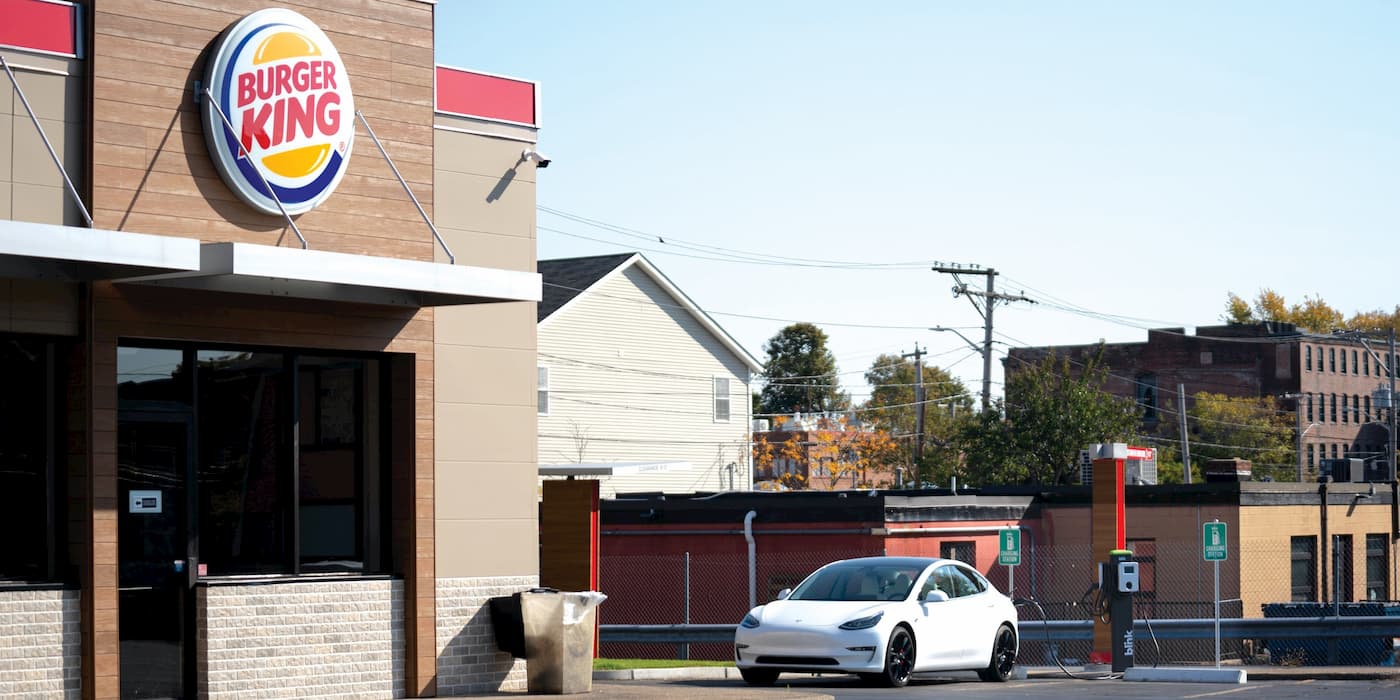
Sustainable Whoppers? Burger King is going electric after revealing plans to transition its North American field team fleet to 100% EVs by 2030.
Founded in 1954, Burger King has grown to become the second-largest fast-food hamburger chain globally, behind only McDonald’s.
As one of the largest quick-serve restaurant companies worldwide, with nearly 19,000 locations across 100 countries, Burger King has a great responsibility to limit the impact of its operations on the environment.
Burger King has already committed to reducing Scope 1 and 2 greenhouse gas emissions by 50% by 2030 on its way to achieving net-zero emissions by 2050.
The hamburger giant is also working to increase its use of renewable packaging and recycling to reduce waste.
Burger King is accelerating its climate initiatives, announcing this week that it has transitioned nearly one-third (31%) of its field team fleet in North America to electric vehicles across 16 states. By 2030, Burger King aims to have an entire zero-emission EV North American fleet.
The field team lives in various states traveling to franchise locations to work closely with management and the BK team to enhance the customer experience, traveling over 1,500 miles on average monthly.
Burger King is working with Element Fleet Management, a leading automotive fleet manager, to expand its EV fleet. David Madrigal, chief commercial officer at Element, said:
The brand’s enthusiasm for the goal, combined with the team’s responsiveness and active partnership enabled us to mobilize vehicle sourcing and charging infrastructure installations at record speed — making this our fastest program launch across the nation to date.
In 2020, Blink Charging announced an agreement to deploy several EV charging stations across Burger King locations in the Northeast.
The move follows other fast-food restaurants that have recently introduced sustainable electric vehicle solutions of their own.
For example, Subway recently unveiled its “EV charging oasis” for EV drivers to charge up while eating at the restaurant, complete with picnic tables, restrooms, green space, playgrounds, Wi-Fi, and more.
Taco Bell also revealed plans last year to introduce fast chargers at its locations in a partnership with Tritium and ChargeNet.
As the world moves toward zero-emission, fully electric vehicles, fast-food companies are looking to accommodate their existing customers and attract a new market.
FTC: We use income earning auto affiliate links. More.



Comments